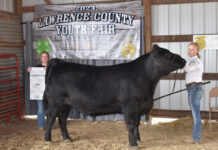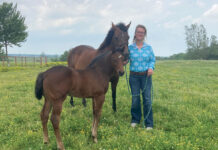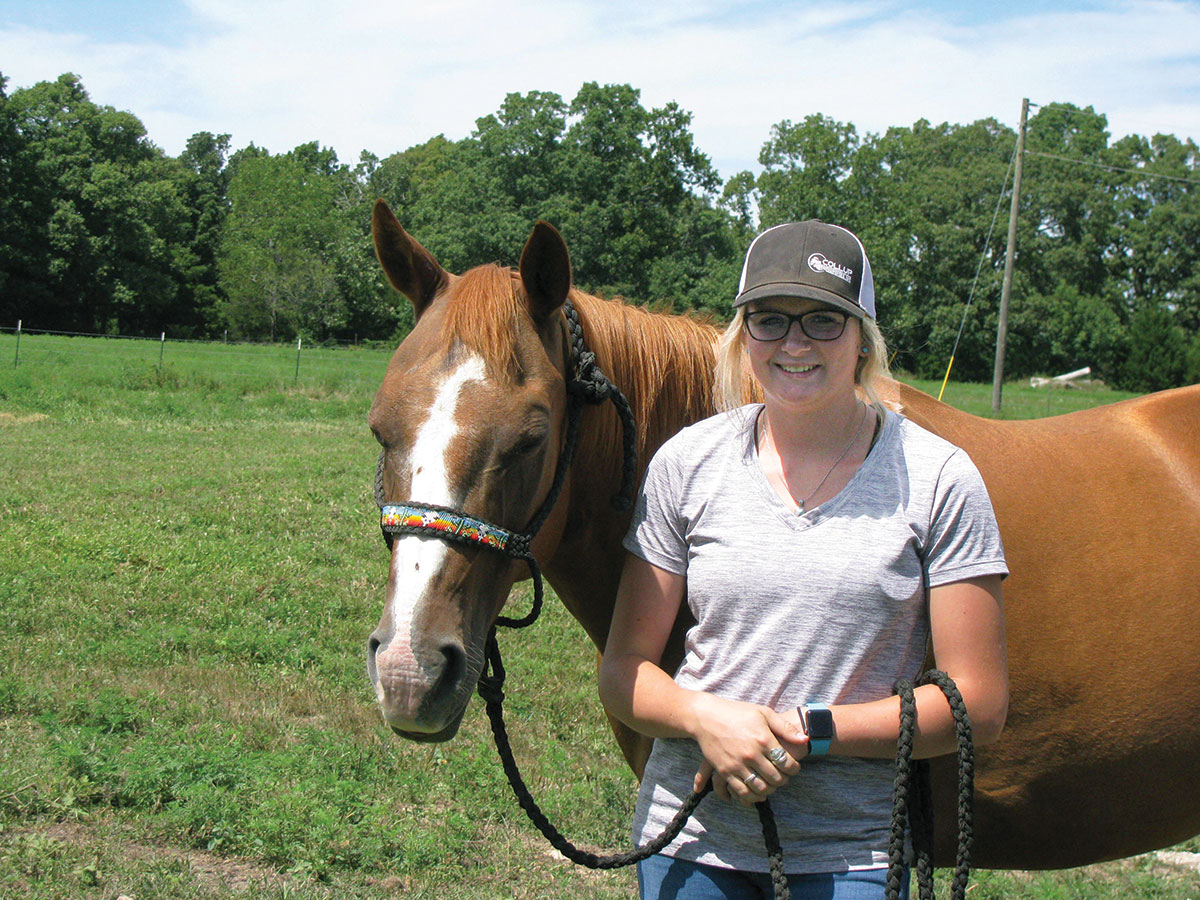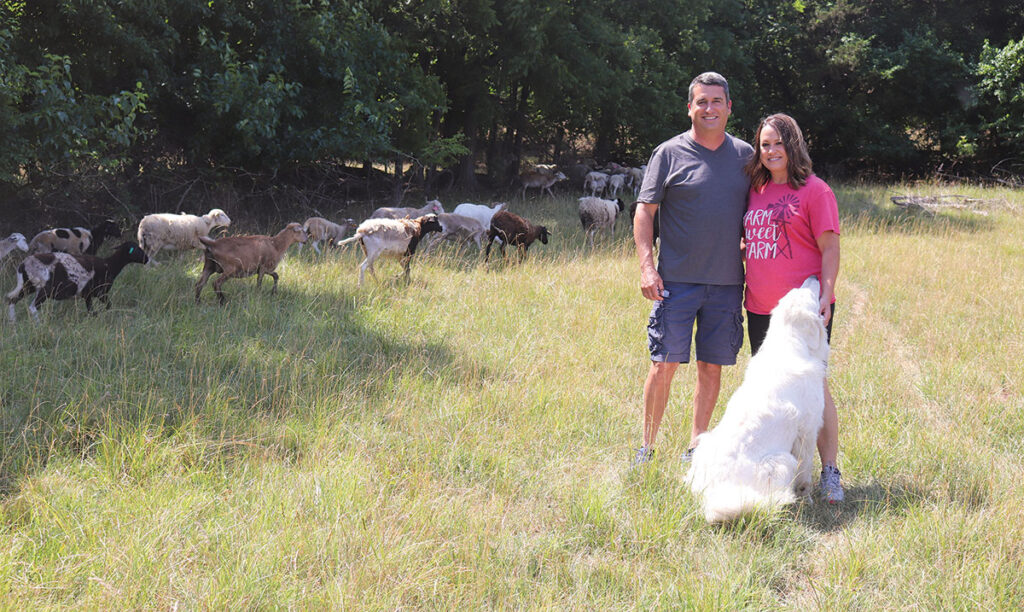
Jason and Janet Wells started with 10 ewes, but not operate a flock of 160 to 170
WEAUBLEAU, MO. – Growing up, Jason Wells wanted to live on a farm. He finally got his wish after he moved out and got horses. Janet’s family had a few goats they milked and other animals, but it was not a large operation.
Before meeting, they each had a few acres and barnyard critters but didn’t consider themselves farmers. Jason and Janet married in 2017, an the following year, they bought a farm in St. Clair County, Mo., between Collins and Weaubleau, Mo., which they dubbed Sweet Springs Farms.
“We wanted to see if we could make this place produce a little income, plus we like to hunt, but it wasn’t worth having the property just to hunt,” Jason said.
When they started their 125-acre operation, they opted for cattle.
Jason said the farm was leased for several years, pastures were overgrazed, and undesirable plants and trees, including thorn trees, were prominent. They began investigating ways to improve their land, and sheep and goats were viable options.
“I had goats many moons ago,” Jason said. “They were awful because they were always out. I lived in Billings, and my neighbor had 20 acres of grapevines and was trying to start a vineyard. I would lay awake at night thinking my goats would make it through the fence and to my neighbor’s grapevines, so I knew I didn’t want goats, and we started reading about sheep.”
Jason and Janet purchased 10 haired sheep from a producer in Wheatland in 2019, and six months later, they sold their cattle herd.
“We reinvested in sheep,” Jason said. “We wanted something out there, and it’s turned into a commercial flock.”
The original flock of 10 was comprised of Katahdin and Dorper crosses, but the Wellses moved more toward Katahdin genetics, utilizing five Katahdin rams with their flock, which now has about 150 to 160 breeding ewes.
“They are making it look like a park out there,” Jason said. “They have taken care of the buck brush in the wooded areas.”
The Wellses credit the sheep and a five-paddock grazing program for the recovery of desirable forages and the elimination of problem plants and trees.
“We’ve let nature take its course,” Janet added.
“Sheep aren’t supper picky,” Jason said. “They will go for the clover first and then eat a lot of things cows don’t. Last year, you could really tell the difference after three seasons of sheep being there. I think the sheep manure also breaks down quicker because it’s smaller than cow patties, and you don’t have to drag pastures to break it up. The land didn’t recover because we’re great farmers; we threw up some hotwire, added sheep, and allowed the grass to recover. I don’t know what next spring will bring, but we haven’t put any inputs into pastures.”
The 21-day grazing cycle they have implemented has also reduced issues with parasites. Animals prone to parasites are subject to culling.
The hardiness of the breed and the lack of required inputs of the Katahdin breed appealed to Jason and Janet.
“I think the Katahdins are also good with lambing and are good mothers,” Janet said. “We also wanted the hair sheep so we wouldn’t have to shear them.”
“Not knowing anything, we did some research before we bought anything,” Jason added. “We both have full-time jobs and didn’t want to have to trim feet all the time or live in the barn during lambing season in February.”
The couple said they are “hands off” with the flock most of the time and only step in when needed.
“Some ewes have never had wormer since they’ve been here,” Jason said. “Others, maybe once in four seasons. We maybe have one that needs her feet trimmed, and we’ll likely cull her. We don’t feed a lot of grain, just enough for them to come when called. Since we got the pastures back up, they just have grass. They are just hardy.”
The flock also receives loose mineral and supplements and are closely monitored by Jason and Janet for any signs of trouble.
“We check them daily, and most of the time, they come up at night and are behind the barn so we can watch them pretty easily,” Jason said. “We also don’t have any problems with predators because we have guard dogs; they do a great job.”
During lambing season, Janet said ewes lamb in the pasture, unless there is a chance for extreme winter weather.
“We check them enough to know if a ewe is taking care of her lambs, and we know if we are going to need to step in,” she said. “We think that allows them to bond a little more.”
If a ewe rejects lambs or not raise quality lambs, she is given only one more opportunity.
“I have a feeling our next lambing season and the one after that will be a little fine-tuned,” Jason said. “We are down to very little work at lambing season. We’ve moved out those that aren’t the best moms, and out of 160, there’s maybe five or six that we will have to keep an eye on this coming season. We get attached more than we should to some of them, and we’ve agreed moving forward, we need to eliminate those issues.”
Lambs are administered a 7-in-1 vaccine at a few weeks of age, including CDT. Because most lambs are not retained, they typically do not give a booster.
“When they hit that 40-, 50-pound mark, they are leaving anyway,” Jason said, adding lambs are sold in large groups of ram and ewe lambs at TS Whites, LLC in Diamond, Mo. They have also sold some lambs to individuals wanting to start flocks.
As they grew their flock, they bought additional ewes for their breeding program but are now retaining replacement ewes. Retained females are typically 60 to 70 pounds before going into the breeding program.
“We are going to be a closed flock and keep the lambs we like,” Jason explained. “I think we’ve been pretty fortunate, as far as no health issues, and I don’t want to import any health issues by bringing in other sheep. We’re happy with what we have.”
Breeding rams are rotated out of the flock. Four of the rams in the breeding program have been in at Sweet Springs Farms for two years and will be replaced next year.
The ewes typically birth twins, and this year’s flock produced six sets of triplets.
“We haven’t had a ewe successfully raise a set of triplets,” Jason said. “Either they lose them, or we bottle them.”
If they have an orphaned lamb, they will sell it as a bottle lamb after a few days.
At weaning (weighing about 35 to 40 pounds at about 2 ½ to 3 months of age), ram and ewe lambs are separated, but Jason said their buck lambs are beginning to show “interest” at a young age, so they are looking to modify when they segregate.
Janet and Jason are considering adding USDA-inspected lamb to customers. If they move forward with that phase, they will likely administer booster vaccines to those animals placed in the meat program.
“We aren’t there yet,” Jason said. “We’ll try to sell it by the piece and have boxes with lamb chops and other things. We’ve got 30 or 40 lambs that might be ready for that around September or October, around that 100-pound mark, and we will see how it goes.”
Jason and Janet explained there are few outlets for consumers to purchase farm-raised lamb in the Ozarks, and then there are misconceptions about lamb that many consumers have.
“I hope we can have an impact there,” Jason said. “We’re going to start giving lamb to friends and family with a recipe and say, ‘Here you go.’ I hadn’t eaten much lamb in my life, and we were somewhere that had some lamb chops from New Zealand. Janet said they were OK, but we liked our better.”
“It was just better meat,” Janet said.
The flock is spring lambing, but the Wellses plan to change the breeding program to fall to capture the higher spring markets.
“We are having lambs in late summer and early fall, and it just isn’t a strong market. Spring sales are two to two and a half times higher because you can hit the religious holidays and the ethnic markets. I think we can get there next year.”
At this time, ram lambs are not castrated, but if they move to direct sales, those animals will be banned.
Moving to sheep and away from cattle has improved the pastures, and the couple said they can handle the flock safely with little or no assistance.
“Every once in a while, something might come up, but we can handle most everything ourselves,” Janet said.
“We had a really good cow until she would have a calf, then she was very protective,” Jason recalled. “She had a calf, and there was just something wrong with it. I hopped off the 4-wheeler to grab it, and she jumped through a hedge tree and about murdered me, so I decided it wasn’t worth it. And they are just as delicious as cows.”
They can also have more sheep per acre than they did with their 20-head cattle herd, and they believe the sheep are more profitable.
Jason said Janet is “amazing” with the flock. He credits her for knowing individual ewes and their history.
“She can look at one and say, ‘She had twins last year,’” Jason said. “How does she even know that? I might know two or three, but she knows the other 156.”
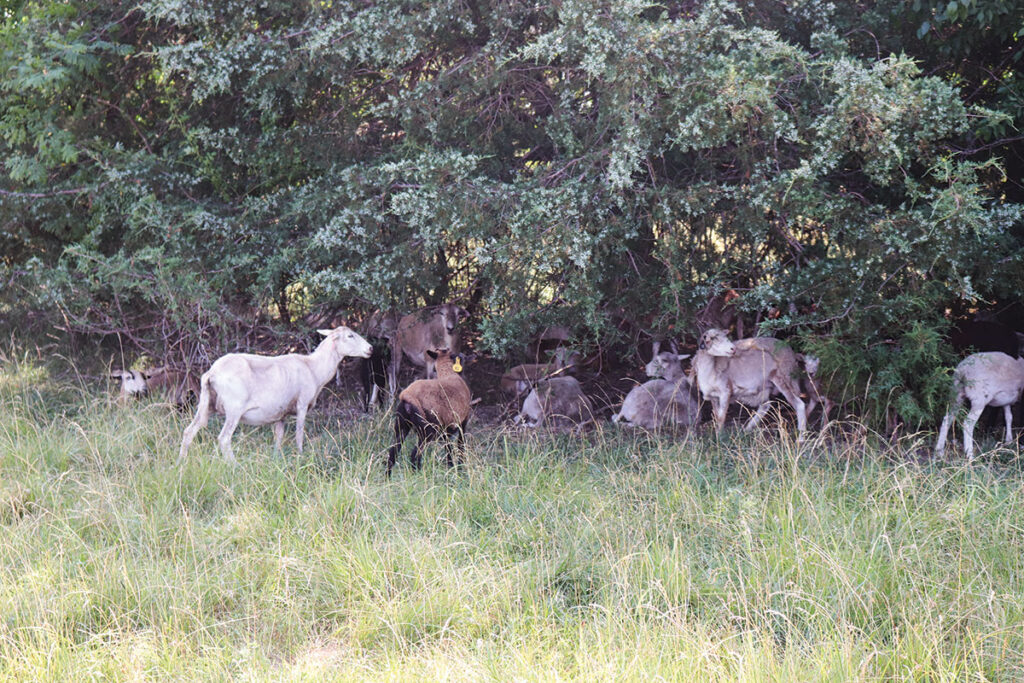
“To me, they are kind of addicting,” Janet said with a smile.
Jason added that Janet’s eye for the sheep has also expanded into a little more color in their flock with colorful individuals, including their “old man” ram, who boasts a colorful coat of browns and white.
“We know we need them more uniform for the markets to maximize these lambs, but at the end of the day, they have to be fun to go out and work with,” Jason said. “I have trouble keeping track of them when they are different colors, so I can’t imagine them being pure white.”
Jason and Janet want to make the most use of their farm with their sheep operation, and they follow that same path with a small plot in Weaubleau, where they started a pumpkin patch.
“There was a place down the on Osceola, and I would go every year to buy pumpkins to decorate with,” Janet said. “They also had straw for sale, and Jason went to get some straw for the sheep. He came home and said they were done raising pumpkins. I was disappointed; then he started thinking we could grow some.”
They had been trying to figure out something to do with their 8-acre plot in town, so growing pumpkins seemed to be the answer.
“It was more successful than we thought it would be,” Janet said with a laugh.
“It looked more like a train wreck,” Jason added. “We planted about 4 acres; they came up, then the drought last year hit. We were hand watering, just trying to keep them alive. That went on for a while, and we said we just couldn’t do it. At the end of August, it looked like a jungle out there; weeds had taken over. But there were a lot of pumpkins out there. We didn’t plan it very well. We just wanted to see if we could grow them.”
They set up a sale stand two weekends in late September to offer pumpkins for sale, and the couple said they did well, well enough to try again this year with 35 varieties.
“We just started looking at pumpkins and thought that one was cool, or this one is cool,” Janet said.
“We really had no plan,” Jason said with a laugh.
The unsold pumpkins did not go to waste and were donated to a children’s home. “Culls” were given to the sheep.
This year they have taken on another crop with a cut flower business.
“I just like flowers,” Janet said. “I like the little bouquets you can find at the farmers markets. I feel like we do just a little here and a little there, and let’s see what we can make work.”
Janet and Jason are considering a market garden at their town property next spring.
“We’ve got things cooking,” Jason said.
When they bought their farm, becoming commercial sheep producers is not what Ja-son and Janet had in mind, but today they are joying what they do.
“I’ve never been one to want to live in town,” Jason said. “If some would have said we’d have a few hundred sheep to deal with, I would have said, ‘whatever.’ We are just enjoying what we’re doing. We are just nerding out on it now. We just enjoy doing it.”
Janet added that goal is to one day be full-time farmers.
“I think that’s why we are doing so many different things,” she said. “We want to get to that point.”
“We both turned 50 this year, and you get to that point where you want to retire from your job and do what you really love,” Jason added. “We want to make that work and make it profitable.”


